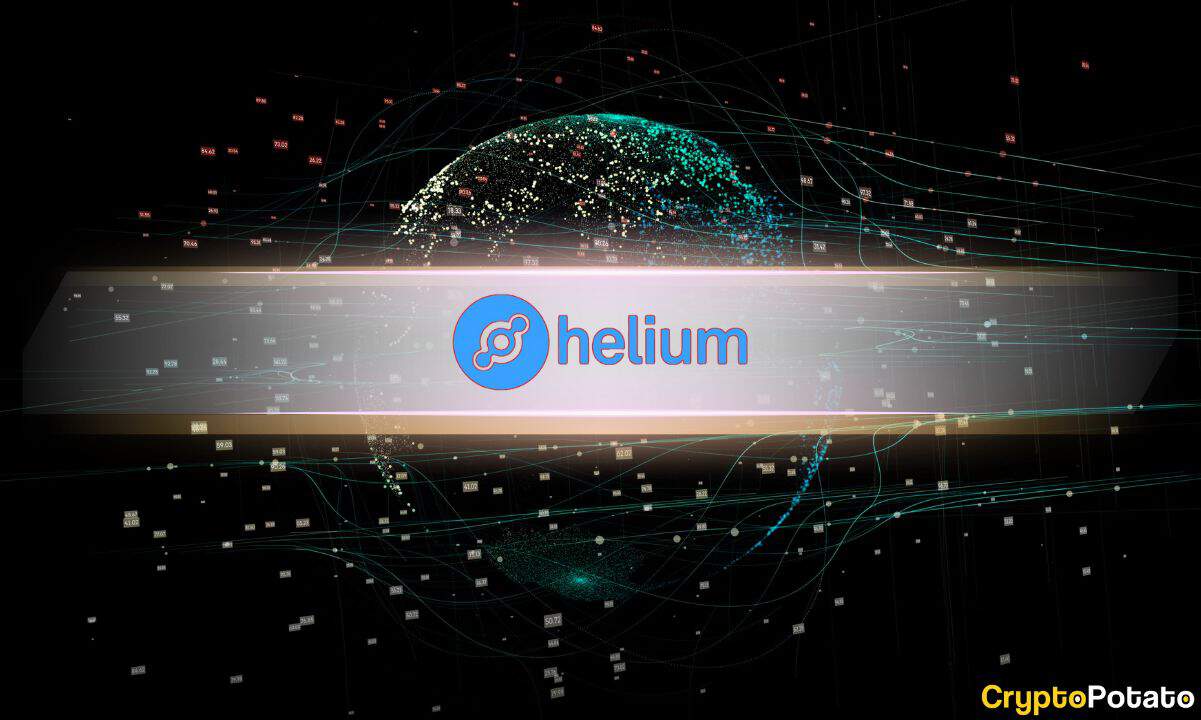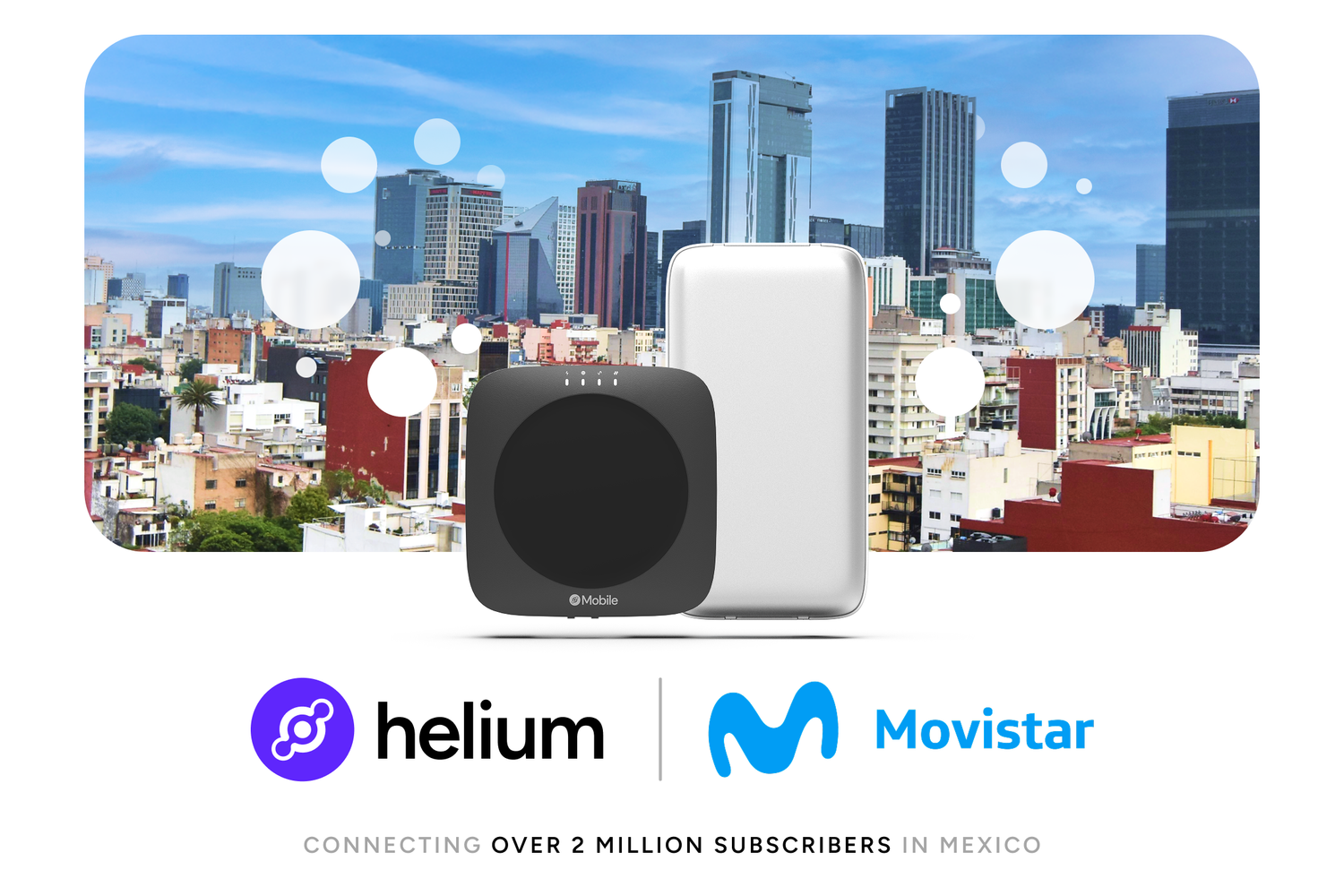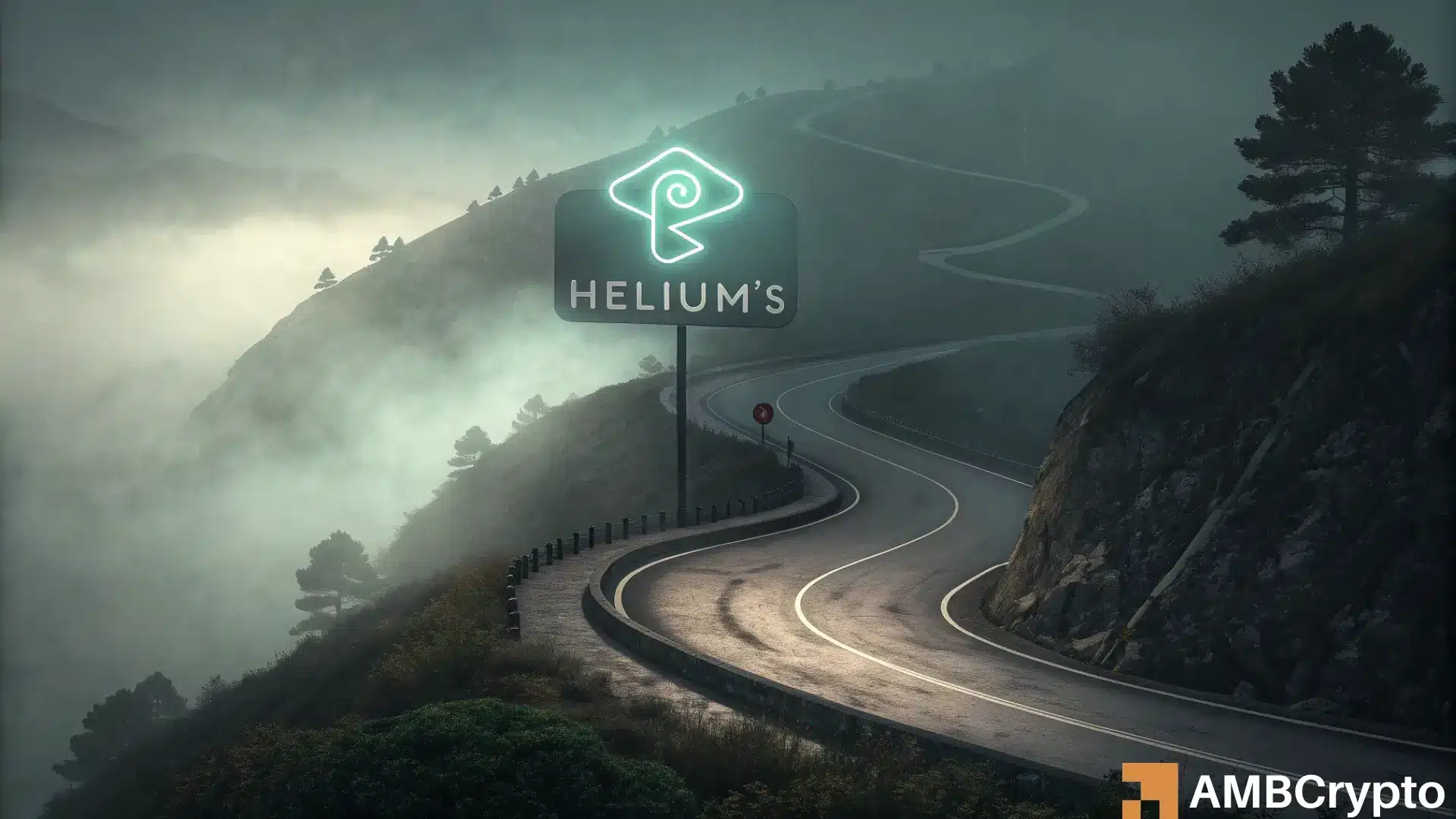Latest Helium News

3 days ago
Top 10 DePIN Coins to Watch in 2025
Decentralized Physical Infrastructure (DePIN) is rapidly emerging as a significant trend in the cryptocurrency landscape, particularly as we look towards 2025. By merging blockchain technology with tangible infrastructure, DePIN projects are providing distinct advantages for both consumers and producers, thus attracting the attention of innovators and investors. This article highlights the top 10 DePIN coins to monitor in 2025, which are distinguished by their robust market capitalizations and promising price trajectories, making them key players in this evolving sector.
Among the top contenders is Helium (HNT), which has garnered considerable interest from traders and long-term holders. Recent technical analysis indicates that HNT has formed a bullish harami candlestick pattern on the 200 Exponential Moving Average (EMA), suggesting a potential price surge of 30% towards $8.5. Similarly, Filecoin (FIL) is showing signs of recovery after a significant decline, with analysts predicting a possible rally of 65% if it maintains support above $4.90. Theta Network (THETA) and Internet Computer (ICP) are also positioned for potential upside, with THETA needing to break above $2.45 for a 36% increase, while ICP could see a 55% rise if it stays above $9.5.
Other notable mentions include IOTA, which has recently experienced a price correction but may rebound if it holds above $0.28, and Render (RENDER), which is poised for a breakout above $7.22. Additionally, Arweave (AR), Akash Network (AKT), AIOZ Network (AIOZ), and Hivemapper (HONEY) are all showing signs of potential growth, with analysts optimistic about their future price movements. As we approach 2025, these DePIN coins present substantial growth opportunities, particularly if favorable market conditions prevail, potentially delivering notable returns for investors.

6 days ago
Helium Network Expands Despite Token Decline and Past Controversies
In the fourth quarter, Helium's native token, HNT, experienced a significant decline, with its circulating market capitalization dropping from $1.3 billion to $1.0 billion, marking a 20% quarter-over-quarter decrease. The token's price also fell by 22%, decreasing from $7.54 to $5.88. Despite this downturn in the market, the Helium network continued to expand, particularly in the area of hotspot adoption. According to a report from Messari, Helium Mobile's number of hotspots grew by 14% QoQ, reaching 24,800 from 21,800. The service's unlimited plans remain competitively priced compared to traditional telecom providers in the US, and the introduction of the Discovery Mapping feature has incentivized users to share location data, although rewards have recently shifted from HNT to Cloud Points.
During the recent Hurricane Helene in North Carolina, Helium Mobile showcased its utility by maintaining operational hotspots that provided 5G coverage while many were left without electricity or water. The team also took proactive measures by distributing emergency kits, including Starlink devices, to assist affected communities. In addition to Helium Mobile, the IoT network also saw a 20% increase in hotspots during Q4, with a total of over 375,000 hotspots onboarded since migrating to Solana in early 2023. However, despite rapid infrastructure growth, demand has not yet caught up, as evidenced by low daily data credits (DC) usage.
Helium has faced controversies in the past, including allegations that its founders hoarded a significant portion of early token rewards, with insiders reportedly mining millions of HNT tokens worth $250 million at their peak. Additionally, Helium faced criticism for overstating partnerships, such as with Lime, the rideshare company, which clarified that their relationship was limited to a 2019 test. Similar issues arose with Salesforce, which denied any partnership, leading Helium to remove their logos from promotional materials. These controversies have raised questions about the company's transparency and the sustainability of its growth strategies.

6 days ago
Solana DePIN Sees Significant Growth Amidst Meme-Coin Decline
In February, the decentralized physical infrastructure network (DePIN) associated with Solana [SOL] experienced a notable rebound, driven by significant user growth in key projects such as Helium and Hivemapper. Helium Mobile reported a remarkable ninefold increase in users, reaching 145,000, marking its highest growth in a year. Hivemapper, a community-driven alternative to Google Maps, also saw its demand triple due to the introduction of new mapping devices. Collectively, these projects maintained steady revenues of approximately $350,000, indicating a stabilization in the DePIN sector for 2025.
The resurgence of DePIN could potentially serve as a catalyst for SOL's value, especially following a significant decline in meme-coin activity that adversely affected Solana's decentralized exchange (DEX) volumes. In January, during the peak of DEX activity, SOL reached a record high of $295, largely fueled by the excitement surrounding the TRUMP memecoin. However, a subsequent 60% drop in DEX volumes led to a decline in SOL's value, which has since stabilized above the $120 support level. The question remains whether DePIN can fill the void left by meme coins and bolster SOL's value moving forward.
Despite the resurgence of DePIN, the overall network activity within the Solana ecosystem remains heavily influenced by meme coins. Active addresses surged to 5.7 million during the TRUMP meme-coin craze in mid-January but saw a decline throughout February. Although there was a slight increase in active addresses to 4.4 million, this was followed by a drop to 2.7 million by the end of the month. By mid-March, the number of active addresses stabilized at 3.11 million, reflecting a 45% decrease from January's peak. As of now, SOL is valued at $130, maintaining its position above the critical 2024 support zone, leaving uncertainty about whether it can avoid further corrections.

12 days ago
Helium Network Shows Remarkable Growth in Q4 2024
Messari, a prominent crypto research firm, has released its latest report titled "State of Helium Q4 2024," which provides an in-depth analysis of the Helium Network's growth, adoption, and operational advancements during the last quarter of 2024. The report highlights significant metrics, including a staggering 555% increase in offloaded data, totaling over 576 TB. This growth is attributed to the expansion of the DePIN (Decentralized Physical Infrastructure Networks) project, particularly in mobile and IoT network capabilities, showcasing Helium's robust performance in a competitive landscape.
In Q4 2024, Helium Mobile experienced a 7% growth in subscribers, reaching over 124,000 users for its unlimited talk and text messaging service, with recent updates indicating this number has surpassed 150,000. The network also saw a 14% increase in mobile hotspots, totaling 24,800, while IoT hotspots grew by 20% to 32,900 following its migration to the Solana blockchain. Notably, partnerships with major telecom companies, such as Telefonica in Mexico, and the integration of Ameriband’s 100,000+ Data-Only Hotspots, have significantly enhanced Helium's coverage and operational capabilities across the U.S.
The report also discusses Helium's strategic implementation of HIP 138, which aims to simplify its token structure by unifying under HNT. This change is designed to lower barriers for new participants by redistributing HNT emissions, with 70% directed to the MOBILE subnetwork and 30% to the IOT subnetwork. Furthermore, Helium's inclusion in Coinbase’s COIN50 index and a case study at Harvard Business School underscore its growing relevance in the DePIN sector. As Helium continues to innovate and collaborate, its role as a leader in facilitating global connectivity and supporting other DePIN projects solidifies its position in the blockchain ecosystem.

21 days ago
Helium Expands Partnership with Movistar in Mexico
Helium Expands into Latin America After Successful Pilot
In a tremendous step forward for Solana DePIN, Helium has announced a strategic partnership with Movistar, one of Mexico’s largest telecommunications providers. With over 300 additional Mexico-based sites, the Helium Network will enable over 2.3M Movistar Mexico subscribers to access and contribute to the world’s fastest growing decentralized mobile network. As part of the collaboration, Helium Network hotspots will be distributed in Movistar retail stores, boosting the DePIN providers credibility in Latin American markets. Movistar will also be able to resell Helium Network coverage to other local MVNOs (Mobile Virtual Network Operators).
Helium X Movistar Pilot Success
After spreading like wildfire across the United States, Helium Network begins global expansion in Latin America. In 2024, Helium and Movistar operated a pilot program in Mexico City and Oaxaca facilitating mobile data offloading. On top of expanding Helium Network’s reach and adoption the pilot also enabled Movistar to reduce operating costs. This allowed the collaboration to deliver more affordable and efficient mobile internet access to millions of Movistar subscribers across the country.

a month ago
Decentralizing Infrastructure: The Rise of DePINs
Decentralized Physical Infrastructure Networks (DePINs) are revolutionizing the management of both digital and physical infrastructure by enabling individuals to contribute and monetize various resources, such as wireless coverage, mapping data, GPS positioning, and IoT device data. This innovative approach leverages blockchain technology and cryptoeconomic incentives, allowing participants to earn rewards for their contributions. The article highlights four key projects within the DePIN space: Helium, Hivemapper, GEODNET, and AYDO, each focusing on different aspects of decentralized infrastructure, including wireless communication, mapping, positioning, and IoT data-sharing.
While all these projects share the DePIN framework, their participation models and hardware requirements vary significantly. Helium allows users to deploy hotspots for decentralized wireless networks, while Hivemapper incentivizes the installation of dashcams for real-time mapping data. GEODNET enhances GPS accuracy through rooftop satellite miners, and AYDO stands out by enabling users to connect existing IoT devices to blockchain networks without the need for proprietary hardware. This flexibility positions AYDO as a unique player in the DePIN landscape, catering to a broader audience by supporting widely used IoT protocols.
Despite the promise of DePINs, several challenges remain. Issues such as hardware accessibility, market demand for data, security, and regulatory uncertainty could hinder the widespread adoption of these models. The success of IoT-focused DePINs will depend on their ability to ensure interoperability, economic sustainability, and compliance with privacy regulations. As the DePIN ecosystem continues to evolve, it is evident that different models may cater to various sectors, offering a compelling alternative to traditional corporate-controlled infrastructure, while empowering individuals with greater control over their contributions and rewards.

a month ago
Helium Faces Price Challenges Amid Market Fluctuations
Helium (HNT) has been experiencing significant price fluctuations, recently needing to close above $4.24 to establish a bullish market structure. After a steep decline of 68.5% from its December resistance level of $9.54, Helium retested the psychological support level of $3 last week. This drastic drop in price over just two months indicates a challenging market environment, with the $3.3 zone now emerging as the next bearish target due to a lack of strong buying momentum and a persistent downtrend since December.
Despite a recent bounce to $4.18, Helium has yet to break its downtrend, although there are signs of weakening bearish momentum. A notable bullish divergence occurred in early February, where the price made lower lows while the Relative Strength Index (RSI) recorded higher lows. This divergence led to a bounce from the $3 support level, resulting in a 28.5% price increase within a week. However, this rally was not supported by strong buying volume, as indicated by the Accumulation/Distribution (A/D) indicator, which has been on a downtrend since mid-December.
The market has shown a large liquidity cluster around the $3.6 mark, which was tested recently, resulting in a quick price jump to $4.19. Following this spike, volatility has decreased, and HNT has consolidated below the $4 level. Traders should prepare for a potential range formation between $3.3 and $4.2-$4.5 in the coming days, with the $3.6 zone likely acting as a barrier to further bearish movements. Overall, the market remains cautious as it navigates these price levels.

2 months ago
Helium (HNT) Price Analysis: Will a Bullish Reversal Occur?
The Helium (HNT) token has recently experienced a notable correction in its valuation, reflecting the increased volatility in the broader cryptocurrency market. Currently, HNT has a Year-to-Date (YTD) return of -34.59%, placing it at the 94th position with a market capitalization of approximately $728.884 million. This raises questions about the token's future trajectory: will it continue its bearish trend and potentially hit a new 52-week low this month, or is a bullish reversal on the horizon? Today's analysis delves into the short-term price movements of Helium.
In the past 24 hours, the HNT price has surged by 20.98%, with a trading volume of $12.054 million, and has gained over 22% in the past week. Despite this short-term rally, the long-term outlook remains bearish, suggesting potential challenges ahead for HNT. The Relative Strength Index (RSI) indicates a sharp spike towards the neutral zone, while the average trendline provides some support, hinting at possible continued gains. Additionally, a positive crossover indicated by the Simple Moving Average (SMA) suggests a more optimistic outlook for the altcoin in the upcoming week.
Looking ahead, if bullish momentum returns, HNT could retest its resistance level at $5.155, with the potential to reach $6.525 if bullish sentiment strengthens. Conversely, if bearish forces prevail, the price may revisit its support level at $3.80, with a risk of dropping to a critical low of $2.510. Investors are keenly watching these developments, pondering the long-term price prospects of HNT as they navigate the unpredictable crypto landscape.

2 months ago
Weaver Labs Updates Roadmap for Adeno Token in 2025
In the rapidly evolving telecommunications sector, innovation often faces significant hurdles. Despite the potential of blockchain technology to revolutionize network infrastructure, many decentralized projects, such as Helium and XNET, have had to pivot from ambitious plans involving 5G deployment to more traditional solutions like Wi-Fi. These shifts highlight the industry's resistance to change and the challenges of integrating new technologies into existing frameworks. As companies like Nova Labs' Helium network adapt to user experience and implementation difficulties, the need for a pragmatic approach becomes clear, especially for startups like Weaver Labs, which is focused on creating an open marketplace for telecom infrastructure through its Adeno Token.
Weaver Labs recognizes the slow pace of change within the telecom industry, particularly regarding shared infrastructure and open networks. The company's updated roadmap for 2025 emphasizes practical steps that align with current market realities while maintaining a long-term vision. Unlike many DePIN projects that struggle with product-market fit, Adeno aims to empower existing telecom networks rather than disrupt them. By integrating with current infrastructure through its Network-as-a-Service (NaaS) model, Adeno seeks to create a sustainable ecosystem where token use is driven by real-world demand rather than speculation.
Looking ahead, Weaver Labs plans to list the Adeno Token on centralized exchanges in 2025, focusing on private telecommunications networks and testing new use cases that leverage blockchain technology. Collaborations with partners like Streamr and Liquid aim to enhance data transmission and infrastructure sharing, particularly in underserved regions. By prioritizing partnerships and practical applications, Weaver Labs is positioning itself to navigate the complexities of the telecom landscape while fostering a community that supports the future of decentralized telecommunications.

2 months ago
Helium Mobile Launches Zero Plan
Helium Mobile Launches Zero Plan
Helium Mobile, a cell phone service utilizing the world’s first community-powered network and the nation’s largest 5G network, has introduced the Zero Plan. This plan offers 3GB of data, 300 texts, and 100 minutes completely free of charge, without any contracts, hidden fees, or gimmicks.
Leveraging a network owned by individuals rather than big corporations, Helium Mobile can provide nationwide service at unprecedented pricing. By combining the Helium Network with the nation’s largest 5G network, the service ensures reliable connectivity for various aspects of daily life.
In an industry where affordability is often compromised for quality, Helium Mobile stands out by offering not only a free plan but also rewarding its users through the Cloud Points program. Subscribers can earn points by engaging in activities like anonymized location sharing, referrals, and surveys, which can be redeemed for gift cards to popular stores and experiences, turning connectivity into tangible value.
Signup for latest DePIN news and updates